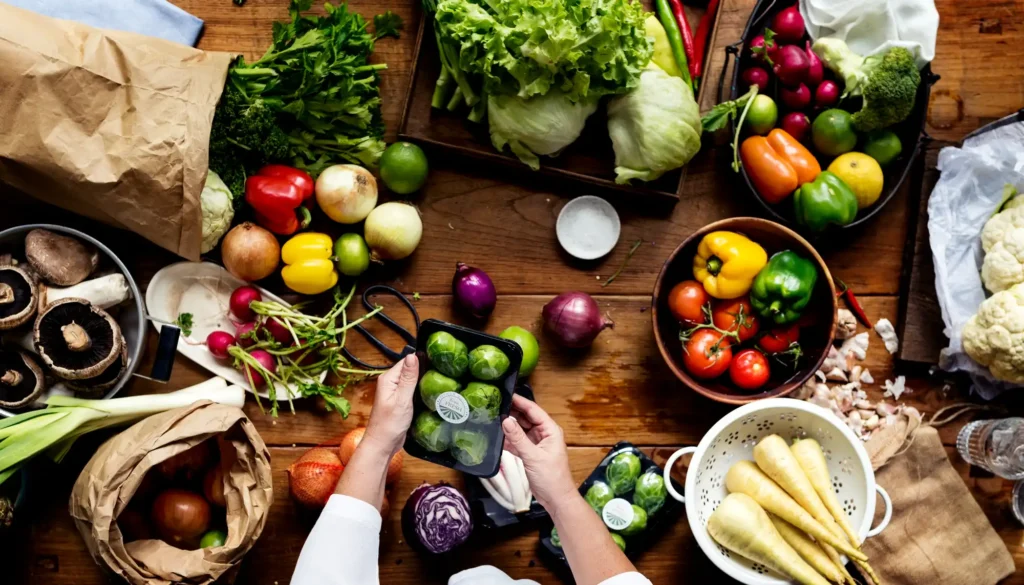- 076 969 9933
- info@translinkhealthylife.com
- 265/5 Pushparama Mawatha Pinthaliya Road 11850 Kadawata, Sri Lanka

As Sri Lankans become more health-conscious, the demand for organic food has risen dramatically. With this surge comes a growing need to understand what organic food labels really mean. Whether you’re shopping at a local market or an organic food store like TranslinkHealthyLife, navigating these labels can be confusing. This article will decode terms like “100% organic,” “organic,” and “made with organic ingredients” to help you make informed, healthy choices.
The label “100% Organic” is the highest standard for organic food. Products bearing this label must contain only organic ingredients—no synthetic pesticides, fertilizers, or GMOs. In Sri Lanka, you’ll find this label primarily on locally produced items like organic rice, fruits, and spices.
These products are grown using sustainable farming practices that prioritize soil health, biodiversity, and natural pest control. They meet the strictest certification requirements set by organizations like the USDA Organic or the Sri Lanka Organic Certification Scheme. When you choose items labeled as “100% organic,” you’re guaranteed that no harmful chemicals or synthetic additives have been used.
The term “Organic” without the “100%” modifier still refers to food grown without the use of synthetic chemicals, but it may contain a small percentage of non-organic ingredients. In Sri Lanka, organic farmers often label their produce as “organic” after meeting the minimum organic farming standards.
For instance, if you purchase organic vegetables, such as carrots or beans, at a local market in Colombo, they are likely labeled as “organic” and contain at least 95% organic ingredients. However, the remaining 5% could be composed of non-organic elements, such as processed salt or certain minerals.
This label often appears on processed foods, such as organic snacks, sauces, or packaged goods. When you see “made with organic ingredients,” it means that at least 70% of the ingredients in the product are organic, while the remaining 30% could be non-organic.
In Sri Lanka, this label is commonly seen on products like organic jams or packaged organic tea. While these products are not 100% organic, they still contain a significant amount of organic ingredients, offering a healthier option compared to conventional alternatives.
In Sri Lanka, the growing interest in organic food has led to the availability of more organic products at local markets and online stores like TranslinkHealthyLife. However, with this increase in options comes a greater need for clarity regarding the quality and authenticity of these products. By understanding organic labels, Sri Lankan consumers can make healthier, more informed choices.
For example, products like organic Ceylon tea, organic coconut oil, and organic rice are becoming popular choices among consumers who want to embrace a healthy lifestyle. However, not all labels are created equal. Some products may mislead consumers by using terms like “natural” or “free from chemicals” when they may not meet organic standards.
In Sri Lanka, organic food products must be certified by recognized certification bodies such as the Sri Lanka Organic Certification Scheme or the USDA Organic certification. Look for these logos on the packaging to ensure that the food you’re purchasing is genuinely organic.
For processed foods, always check the ingredient list. If the product is labeled as “organic,” it should contain at least 95% organic ingredients. If it’s labeled “made with organic ingredients,” then 70% of the ingredients should be organic.
Purchase organic food from trusted stores like TranslinkHealthyLife, which specialize in organic products and ensure that their offerings meet high standards of quality.
Supporting local organic farmers in Sri Lanka is a great way to access fresh, quality organic products. Many organic farmers use sustainable practices that benefit the environment, and buying locally supports the Sri Lankan economy.
While organic food is growing in popularity, it still faces challenges in Sri Lanka, such as:
Understanding organic food labels is essential for making healthier, more informed decisions. In Sri Lanka, as the organic food market continues to grow, consumers must learn to decode terms like “100% organic,” “organic,” and “made with organic ingredients.” By supporting certified organic food producers and retailers like TranslinkHealthyLife, Sri Lankans can enjoy a healthier, more sustainable lifestyle. Whether you’re choosing organic rice, spices, or packaged goods, knowing what’s truly organic can help you make the best choices for your health and the environment.
Chat with Us